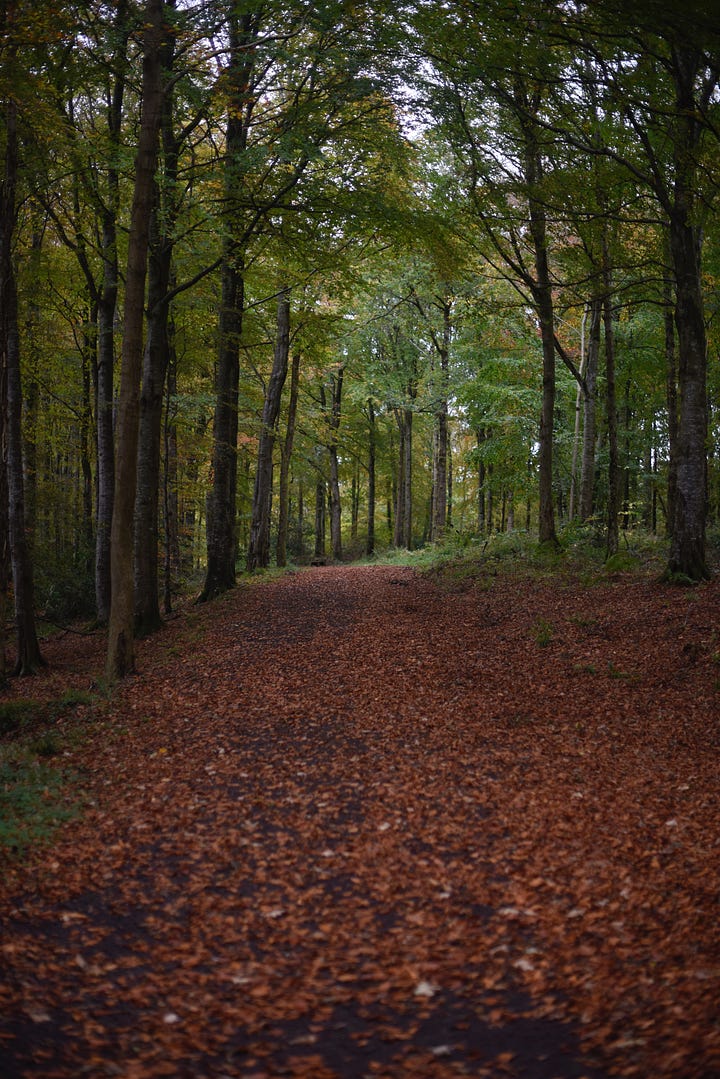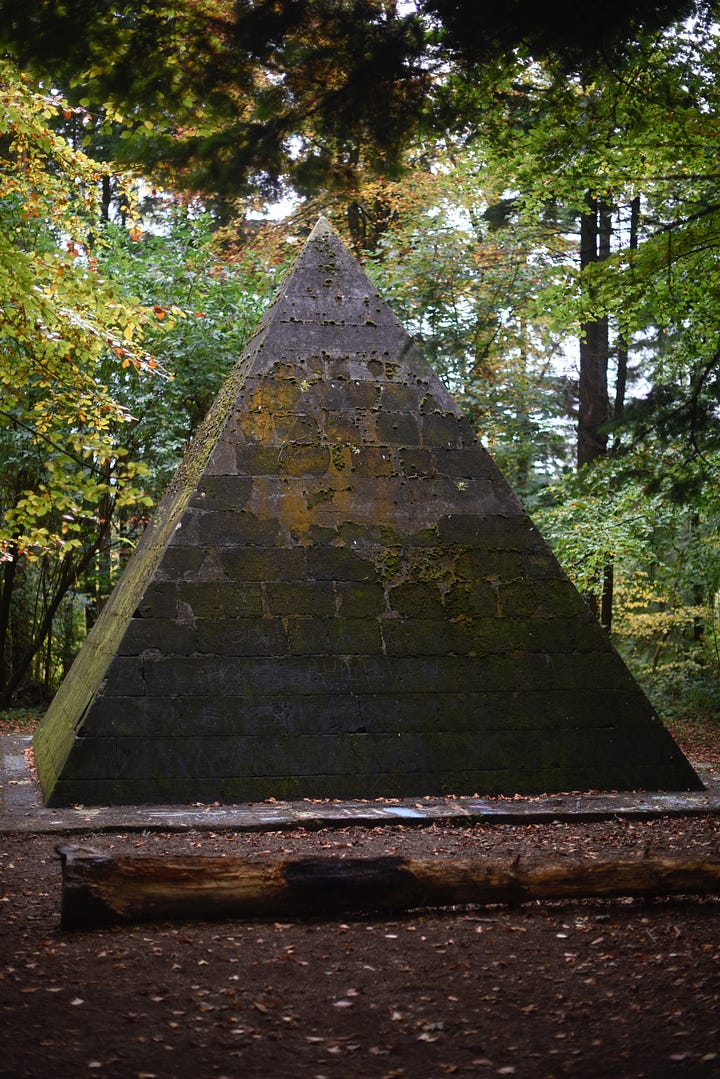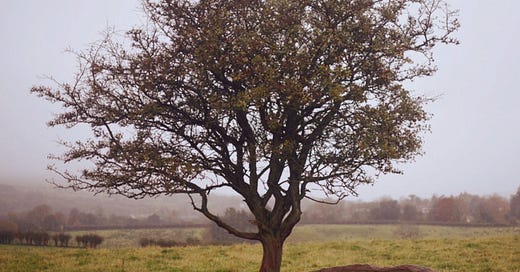October started bright and sunny. Haloed, crisp days, fire toned leaves floating past the windows. I took us out into the garden, my boy and I, as darkness fell one night where he played as I stoked the fire bowl. We told stories as he drank hot milk and ate toasted marshmallows on the steps of my studio watching for the stars and the bats. And then he slept, late as has become too usual but easily and sound until morning. Another storm blew in from the south mid-week. Rain, more rain, I know we’re famous for it here in Ireland, but this isn’t usual. And now as I write on a Saturday afternoon, with a donkey-belly sky (a Peruvian term for their near constantly grey skies) we have soaring temperatures just as the shops are suddenly full of all things Halloween. Modern, commercialised, Americanised Halloween. Being sold back to us and lapped up by those so detached from their roots it makes me uneasy. Every year my social media is saturated with “spooky season” from mid-September onwards. And it drives me nuts.
“It’s not, it’s not! Not yet!” I want to shout.
But the sacred, ancient Celtic festival that started all of this has become so overrun with consumerist driven ideas that it will fall on deaf ears. Although perhaps, dear readers, you could lend me yours a while this month and I will bring you both the lore of Halloween (Samhain) and some tales to satisfy any craving for spooky season?
By the Old Ways the season for things that go bump in the night, the ancient, uncanny, unnerving spooky season starts with Samhain, not before it. Whilst the darkness gathers now, we are still on solid ground, albeit sliding rapidly towards Winter and all the things our ancestors feared in the dark. Winter is the true spooky season, Samhain (‘Sow-en”, which is the word for November in Gaeilge) until twelfth night (January 6th) in the more modern calendar, Samhain until the candles of Brigid’s Day by the old. The veil thins at Halloween, Samhain Eve and remains thin through the darkest weeks of the year. The door is blown open between worlds. And it only closes with the growing light. This is the reason for your modern Christmas greenery, the wreath on your door; they are wards against what wanders in the night. I’ve written about this before and I’ll write more as we continue through the Wheel, following the moons as we are here but today I want to bring you a local folktale, suitably spooky as is now requisite for the build-up to Halloween.
It is a vampire tale, one that surely inspired the myth as we know it today. I first wrote it up five years ago after a series of strange coincidences and a hefty dose of intuition lead a good friend and I to the grave site I tell of below.
Next week I will bring you October’s Writing Down the Weeds, I’m torn between Elder and Blackthorn, so if you have a preference let me know in the comments. And I have promised you a Púca tale later this month before the Full Moon and Samhain, so be sure to subscribe to get it all in your inbox.
A few miles west of Garvagh, Co.Derry in the area of Glenullin, and townland of Slaughtaverty, stands a lone Hawthorn in a field, atop a hill, a large quarried stone lies at its base. So far so normal, at least for us Irish. Our rural areas are dotted with Fairy Thorns, but this is no mere fairy site, this particular tree and its long flat stone is said to mark the grave of the Chieftain Abhartach.
Folklore tells us that Abhartach lived, and importantly for the story, died in the 5th or 6th century C.E. Accounts vary, some say he was deformed, some say he was a dwarf, but all agree he was a powerful and evil magician. He was a possessive and jealous man and suspecting his wife of having an affair he designed to climb outside her bedroom window to catch her in the act. However, he slipped and fell to his death. He was buried in a manner befitting a chieftain, standing upright. Yet the following day, come dusk Abhartach had returned, demanding each of his subjects let blood from their wrists into a bowl for him to drink. He instructed that this gruesome meal be prepared for him daily, and terrified of his evil the people fed him their blood, sustaining his unnatural life as one of the marbh bheo, the living dead. Soon his subjects grew weary of living in fear but none amongst them were brave enough to attempt an assassination and so they asked the warrior chieftain Cathán (now O’Kane) to slay Abhartach for them.
Cathán killed the evil chieftain and again buried him standing in his grave. The next day however Abhartach had returned, in a foul mood and demanding more blood. The terrified people recalled the warrior, he again dispatched their king and returned him to his grave. But the next day, as the shadows grew dense, he returned once more, now in a rage and craving more blood. Cathán was at a loss, the man had died three times; twice by his own hand and he’d put him in the ground himself, so he asked the local Druid (some tales tell of a local saint but in early Irish Christianity the lines between our ancient paganism and the new religion are incredibly blurred. There is however a local ‘saint’s track’ and holy well attributed to St.Eoghan or John, yet it is certain this would have been a pagan site long before Christianity took hold). The wise man informed the perplexed warrior that to kill the undead chieftain he must be slain with a sword made of yew wood, buried upside down, feet towards the sky and a large stone placed on top of the grave to help hinder his resurrection. The stone was then to be surrounded by branches of sacred Irish trees such as hawthorn and rowan. The druid gave a grave warning that should the stone ever be removed Abhartach would be free to walk amongst us once more. No less puzzled Cathán carried out the holy man’s orders and the people were finally rid of their undead ruler. The twigs grew into a thorn tree and a huge dolmen was built upon the site so no one would forget what lay there and unwittingly release him. However now only one stone and the tree remain.
The folktale was collected in the late 1800’s by the Folklorist and historian Patrick Weston Joyce and would have certainly been in circulation in Dublin whilst Bram Stoker was a civil servant there. Additionally, the Irish term droch fhola meaning bad blood bears more than a passing resemblance to Dracula. I’ve always said we Irish invented Tall, Dark and Moody, just spend a little time with our men…
If local lore is to be believed the land is still considered bad ground and when an attempt was made to clear the site just over twenty years ago the chainsaw brought to cut down the tree broke down three times and the chain wrapped around the stone to remove it snapped cutting the hand of one of the workers and allowing blood to seep into the ground. No more attempts have been made.
The site is not signposted, it’s private land and is tricky enough to find, although we had a lot of luck, so head to Garvagh to try yours this Halloween.
Should you find Arbhartach or not definitely take a wander in Garvagh’s leafy, mature forest where you’ll find a Pyramid amongst the trees. Built as a final resting place for Lord Garvagh, who became enamoured with the structures in Egypt on his Grand Tour, the tomb was never used and now stands as a folly atop a hill in the woods.







Oooh love this story. Thank you! And my vote is for Blackthorn :)